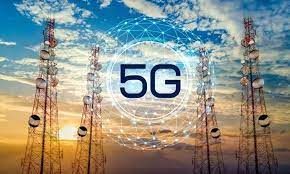In the ever-evolving landscape of technology, 5G stands out as a transformative force poised to reshape the way we connect, communicate, and experience the digital world. As the fifth generation of wireless technology, 5G promises unprecedented speed, low latency, and a myriad of possibilities for industries and consumers alike. This article explores the game-changing potential of 5G technology and its impact on connectivity in the digital age.
Understanding 5G Technology
- Speed and Bandwidth: 5G technology boasts significantly faster speeds compared to its predecessor, 4G. With the potential to reach gigabit-per-second speeds, 5G opens the door to quicker downloads, seamless streaming, and enhanced user experiences.
- Low Latency: One of the defining features of 5G is its low latency, or the delay between sending and receiving data. Reduced latency enables real-time communication, making applications like augmented reality (AR), virtual reality (VR), and online gaming more responsive and immersive.
- Increased Capacity: With a higher frequency spectrum, 5G can accommodate a vastly increased number of connected devices simultaneously. This is particularly crucial as the Internet of Things (IoT) continues to expand, connecting everything from smart appliances to industrial sensors.
Applications of 5G Technology
- Enhanced Mobile Experiences: 5G promises a leap forward in mobile experiences, enabling faster downloads, smoother streaming, and improved overall performance for smartphones and other mobile devices.
- Internet of Things (IoT): The increased capacity and low latency of 5G are pivotal for the growth of IoT. Smart cities, connected cars, and industrial IoT applications can thrive with the seamless connectivity provided by 5G.
- Augmented and Virtual Reality: The low latency of 5G is a game-changer for AR and VR applications. From immersive gaming experiences to practical applications in healthcare and education, 5G enhances the potential of these technologies.
- Smart Cities: 5G plays a crucial role in the development of smart cities. Connected infrastructure, intelligent transportation systems, and efficient public services benefit from the high-speed, low-latency connectivity provided by 5G.
- Telemedicine: The reliability and low latency of 5G enable advancements in telemedicine. Remote patient monitoring, real-time consultations, and surgical procedures conducted with augmented reality benefit from the enhanced connectivity.
Empowering Industry Transformations
- Manufacturing: 5G facilitates the implementation of smart manufacturing processes, including the use of robotics, automation, and real-time monitoring to enhance efficiency and productivity.
- Retail: Retail experiences are evolving with 5G, enabling augmented reality shopping, personalized advertising, and seamless digital transactions for a more connected and convenient consumer experience.
- Education: The education sector benefits from 5G by enabling immersive and interactive learning experiences. Virtual classrooms, augmented reality textbooks, and remote collaboration are enhanced with the advanced connectivity.
Challenges and Considerations
- Infrastructure Investment: The rollout of 5G requires substantial investment in infrastructure, including the deployment of new towers and small cells. This poses challenges for widespread adoption, especially in rural and underserved areas.
- Security Concerns: As connectivity increases, so do cybersecurity concerns. The expanded attack surface of 5G networks requires robust security measures to protect against potential threats and vulnerabilities.
- Regulatory and Spectrum Challenges: The allocation of spectrum and regulatory considerations play a role in the deployment of 5G. Governments and regulatory bodies need to address these challenges to ensure a smooth transition to 5G technology.

